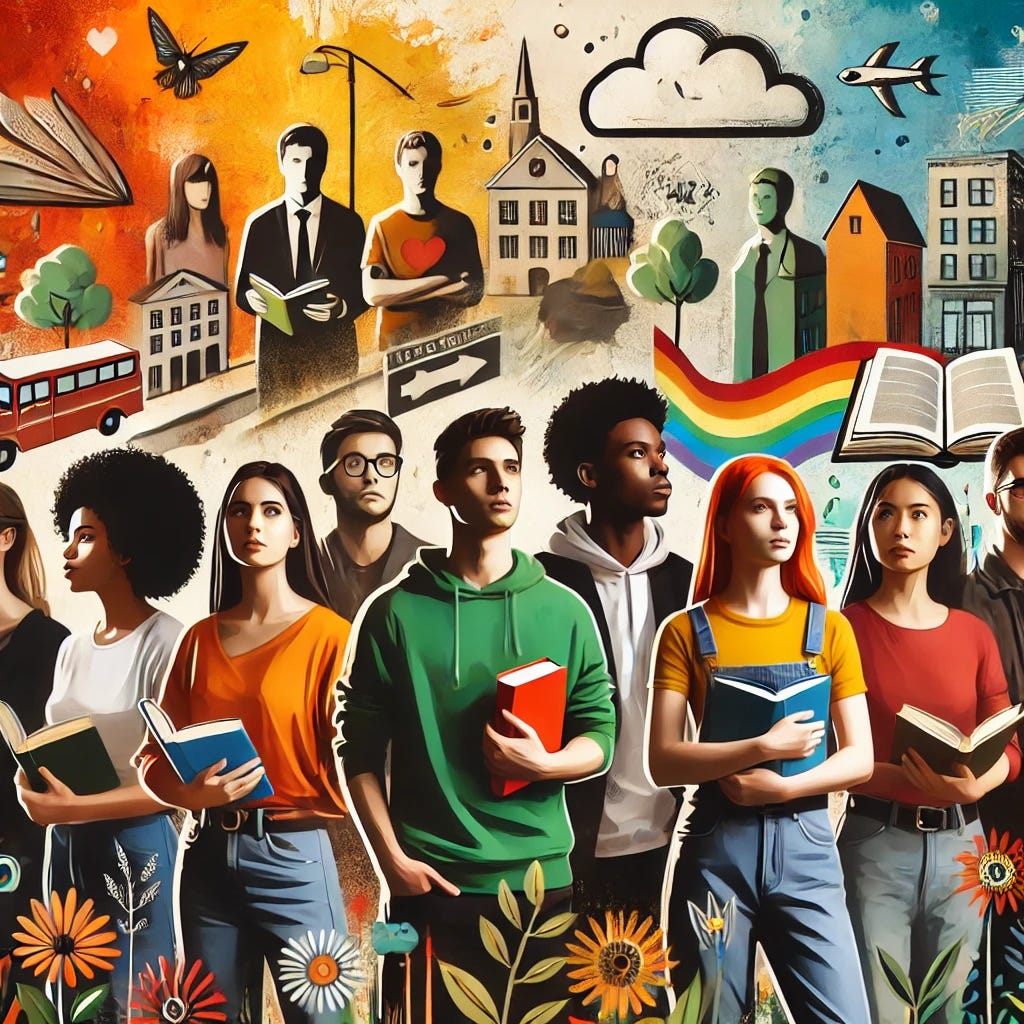Are Coming-of-Age Novels Too Long for Today’s Short Attention Spans?
It's Fiction Week on Grapes & Sand Newsletter
In an era dominated by short-form content like TikTok videos, Instagram reels, and bite-sized blog posts, the way audiences engage with stories has shifted dramatically. The fast-paced consumption of media raises a critical question: Is the coming-of-age novel still in demand, or is it struggling to keep up with the times?
Despite concerns about dwindling attention spans, coming-of-age stories remain an essential literary genre. However, their format, themes, and how they reach audiences have evolved to align with modern trends.
Why Coming-of-Age Novels Still Resonate
The coming-of-age novel has historically been a powerful genre, exploring themes of self-discovery, identity, and personal growth. Here’s why they continue to thrive:
• Relatability Across Generations
Every generation experiences the universal journey of self-discovery. Stories that capture the complexities of growing up will always find an audience.
• Genre Crossovers Keep It Fresh
Many successful coming-of-age novels now blend with other genres. Books like The Hunger Games (dystopian), We Were Liars (thriller), and The Summer I Turned Pretty (romance) show how this theme can evolve while maintaining its core essence.
• Diversity and Representation
Readers today demand stories that reflect a variety of backgrounds, identities, and cultural experiences. The success of books like The Hate U Give by Angie Thomas demonstrates the power of authentic, diverse voices in coming-of-age literature.
• Streaming Adaptations Drive Demand
The popularity of TV and film adaptations of coming-of-age books (Heartstopper, Love, Simon, Euphoria) has kept the genre relevant by introducing it to new audiences through visual storytelling.
The Black Writer’s Perspective on Coming-of-Age Stories
Black authors have long used the coming-of-age genre to explore themes of race, identity, and systemic challenges. Writers like James Baldwin (Go Tell It on the Mountain), Jacqueline Woodson (Brown Girl Dreaming), and Jason Reynolds (Long Way Down) craft narratives that not only capture youth experiences but also reflect cultural and historical realities.
According to bestselling author Nic Stone (Dear Martin), "Coming-of-age stories are more important than ever for Black youth. They serve as a mirror for self-reflection and a window into experiences beyond one's own." This perspective highlights how these narratives help shape both personal and societal growth.
How Coming-of-Age Novels Are Evolving
To keep up with changing reader habits, modern coming-of-age books are adapting in several key ways:
• Faster Pacing & High-Impact Storytelling – Books now hook readers quickly, often with action or deep emotional stakes within the first few pages.
• Multimedia & Interactive Elements – Some books include QR codes for playlists, social media integrations, or digital storytelling components.
• Serial Storytelling & Shorter Formats – Serialized releases on platforms like Wattpad and shorter, episodic novels are gaining traction with younger audiences.
The Verdict: Is the Coming-of-Age Novel Still in Demand?
The genre isn’t disappearing—it’s evolving. While attention spans may be shorter, the desire for stories that explore growth, identity, and transformation remains strong. Authors who adapt their storytelling to current trends—without losing the depth that makes coming-of-age stories compelling—will continue to find success.







